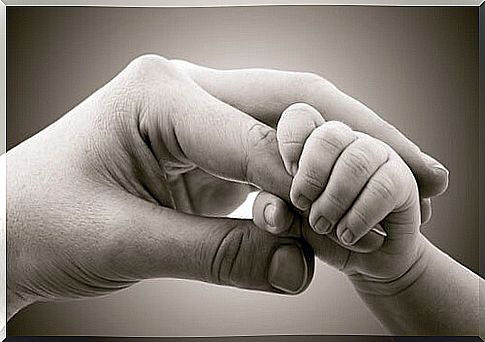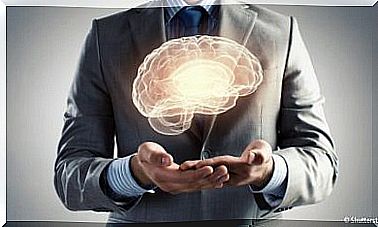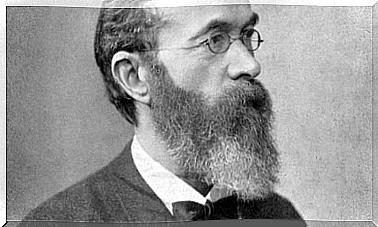The Neurobiology Of Human Attachment

Attachment is a defining characteristic of mammals. Thus, the study on the neurobiology of human attachment is also based on research carried out in animals. Based on recent research, it appears that attachment is based on the interference of oxytocin and dopamine in the striatum.
What seems definitive is that, throughout life, different human attachments share the neurobiology on which they are based. They are generally characterized by the synchrony of behavior and the integration of the cortical and subcortical networks involved in the mechanisms of reward and motivation, built-in simulation, and mentalization.
The Common Neurobiology of Human Attachment
According to Ruth Feldman, a researcher in the field of human attachment neurobiology, the study of attachment in mammals must be done from a developmental perspective. Thus, the associative cerebral cortex is connected, to a large extent, by early experiences in child-rearing contexts (2-4).
The attachments that are created later, both with romantic partners and close friends or members of a group, reuse the basic machinery established by the initial mother-child bond during early “sensitive periods”.
These “sensitive periods” are defined as early and specific time windows in life when the brain must experience certain environmental inputs for proper maturation (5). In the context of attachment, these involve the typical rearing behaviors of the species.

Propositions of the neurobiology model of human attachments
In her research, Dr. Feldman brings together some propositions from the neurobiology model of human attachment. These are the following:
- As we have discussed before, research on human attachments involves a developmental perspective. Thus, the link between mammals would be supported by neurobiological systems. These are shaped by the mother’s relationship with her offspring during the first sensitive periods (6).
- Continuity in neurobiological systems supports human linkages. In this way, human attachments reuse the basic machinery established by the parent-child bond in the formation of other attachments throughout life, such as romantic attachment or close friendships (7).
- Human bonds are selective and long-lasting. The bonds are for the purpose of attachment and last for long periods, even a lifetime (1).
- Bonding is based on behavior triggered by the expression of species- specific, person-specific, and culture- specific behavior patterns. Linking involves bottom-up processes. The bonding-related brain and neuroendocrine systems are activated by attachment-related behavior (4, 8).
- The synchrony of biological behavior is a key characteristic of human attachments. Thus, human attachments are characterized by the coupling of non-verbal behavior with the coordinated physiological response between partners during social contact (9).
- The central role of the oxytocin system and the dopamine-oxytocin connection are implicated in human motherhood. Also in parenting, coparentation, romantic attachment and close friendship. The integration of oxytoxin and dopamine in the striatum cleaves the junction, drenching attachments with motivation and vigor (10).

Continuing with the proposals …
- Link formation implies increased activity and stricter interference between the relevant systems. Activation and the closest links between the systems that support affiliation, reward, and stress management are seen during periods of attachment formation. (eleven)
- Human attachments promote homeostasis, health, and well-being throughout life. Social attachments improve health and happiness. Meanwhile, social isolation increases stress, deteriorated health and death (12).
- Attachment patterns are transferred from one generation to another. Behavioral patterns experienced in early life organize the availability of oxytocin and the location of the receptor in the baby’s brain. Thus, they configure the ability to raise the next generation (13, 14).
- The human brain is an organ made up of mother-child attachment and proximity to the mother’s body to function within the social ecology. The immature brain of the young mammal at birth and the need to be close to a mother who breastfeeds the brain as a “situated organ” constantly responding online to the social world (15).
- The human bonds experienced throughout life are transformative. Thus, they have the potential to repair early negative relationships through later benevolent relationships. The great plasticity of the human social brain and its behavior-based nature allow subsequent attachments to reorganize neural networks and repair, at least in part, negative early experiences (16).
Thus, it appears that the neurobiology of human attachment is based on the interactions of oxytocin and dopamine in the brain. It also appears that these brain systems are formed during childhood attachment. Thus, it is interesting to know that these systems are later recycled for the creation of the following bonds in life, such as friendship or love.









